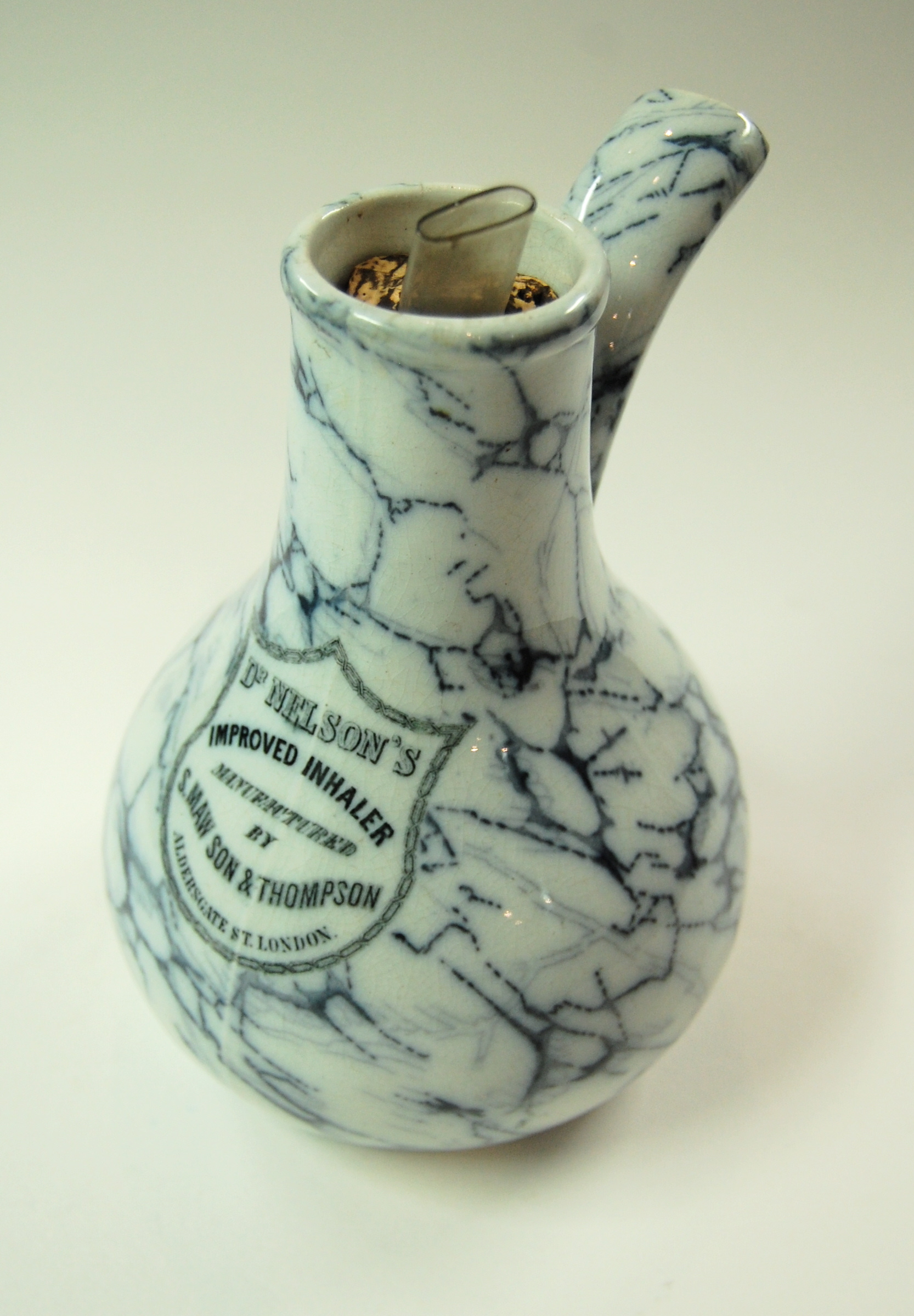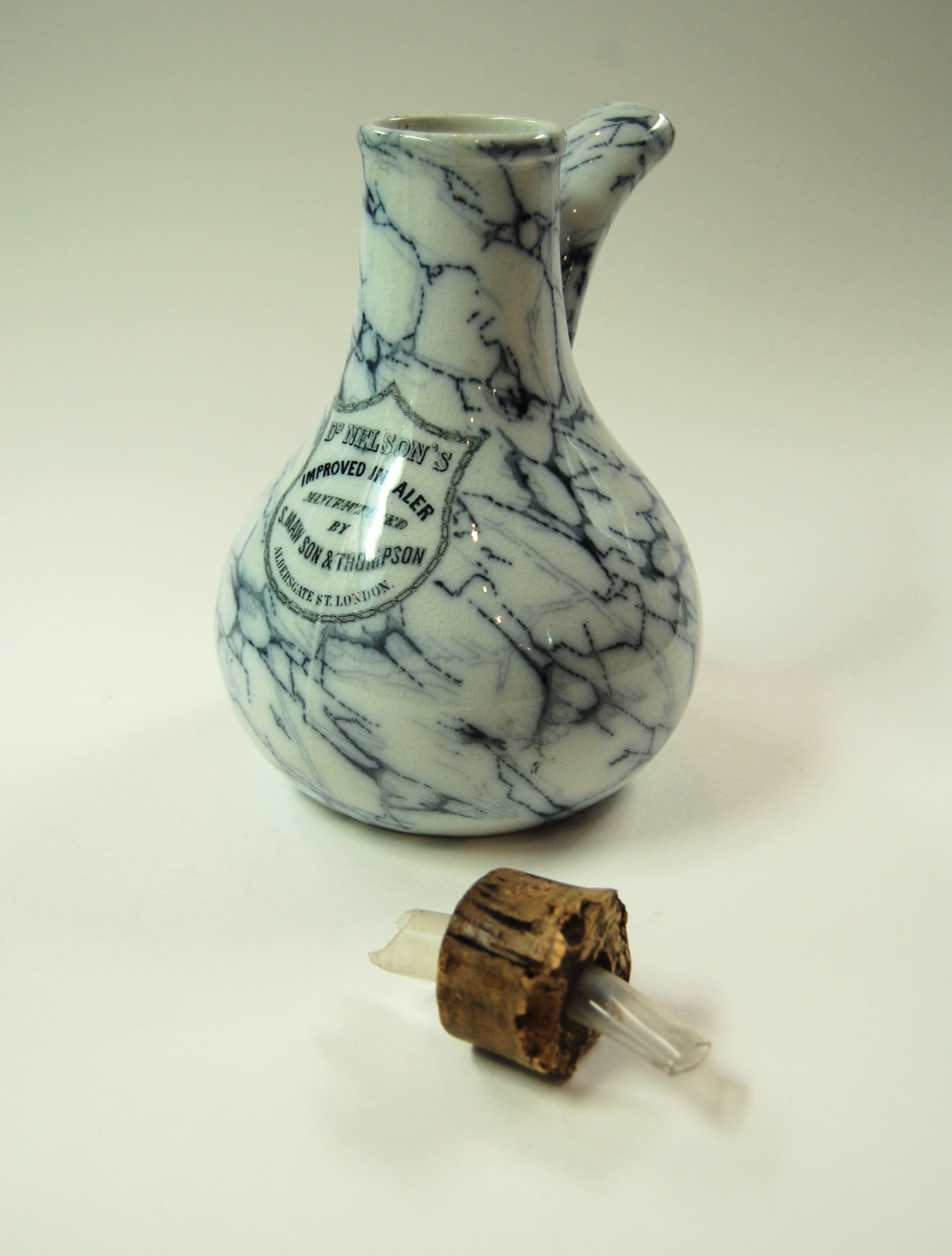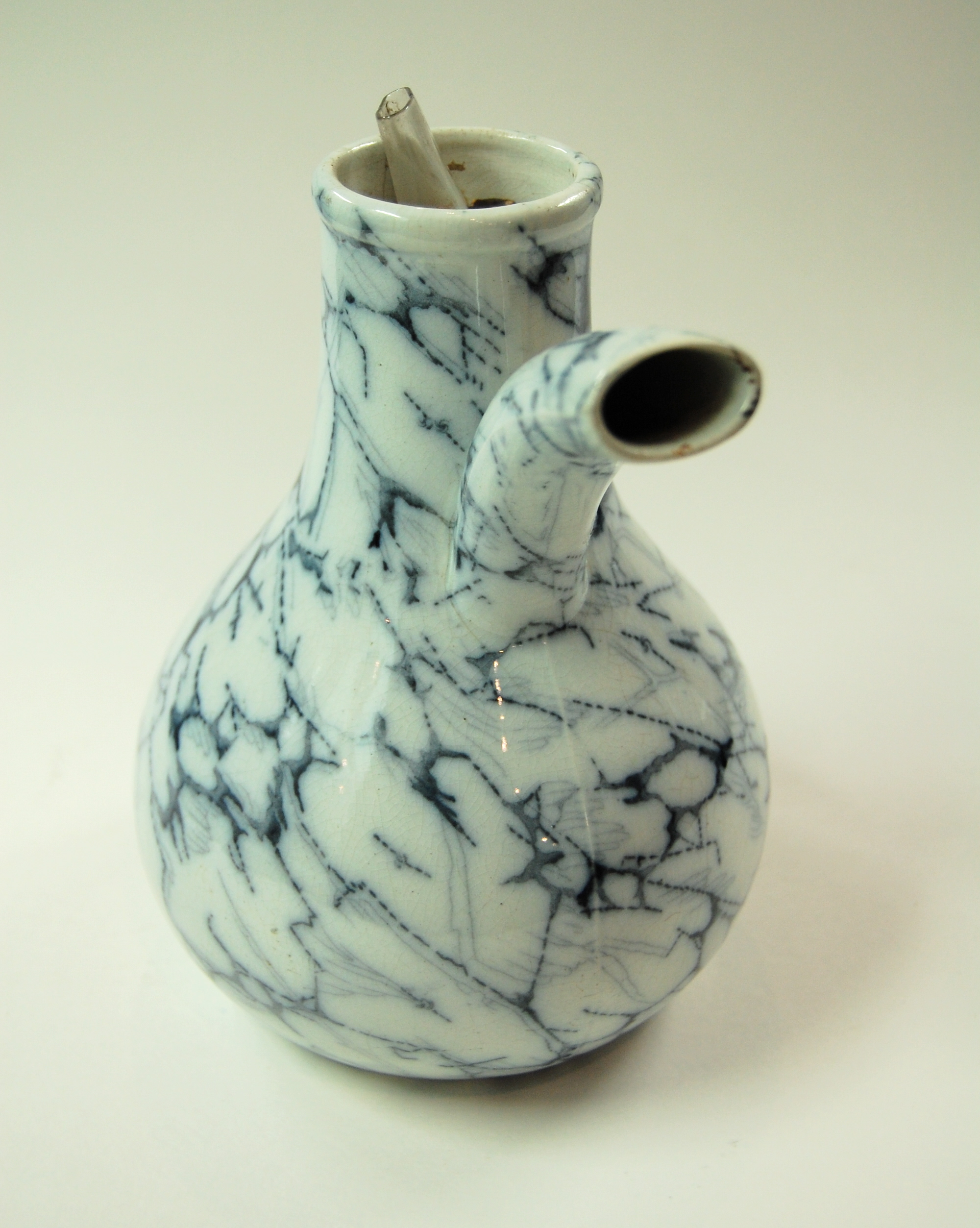


Between 1861 and 1865 Dr Nelson’s invented his ‘new and improved’ ceramic inhaler. This double-valved device was designed for steam inhalations - inhaling vapours to clear the body of respiratory ailments. It works by filling the inhaler with an infusion and boiling liquid then inhaling the steam deep into the lungs. The cork stopper is inserted in the wide opening at the top of the inhaler, whilst the hollow glass tube acts as mouthpiece used to inhale the steam.
This type of inhaler proved so efficient that its design has changed little since Dr Nelson’s Victorian model. Nelson’s inhalers were used well into the 20th Century and even modern steam inhalation devices differ only slightly. Thanks to the ease in using this item it became a popular home medicine in treating respiratory infections without the need for a physician or expensive equipment.
Inhalation therapy has been practiced in some form or another for over two thousand years. In ancient times odours, steam and smoke have been inhaled for both medical and non medical purposes. The term ‘inhaler’ first appeared in the late 18th Century, but it was from the 1800s that the ceramic inhaler was popularised in mainstream medicine and importantly, in the home.
This inhaler is on display with other examples in the Home Medicine display case at the George Marshall Medical Museum.